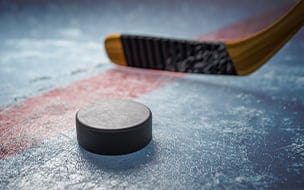
The Science of Health
Health News and Information to Help You Live Your Best
Get the latest from our experts delivered right to your inbox every month.
Showing of 1310 results

Can Local Honey Help Ease Seasonal Allergies?
Many people believe that a spoonful of local honey a day has the power to ease sneezing, runny nose and itchy eyes. But does it work?

Want to Boost Hockey Speed & Strength? Prioritize Off-Ice Training
On-ice drills help hockey players hone their skills, but what happens off the ice matters just as much when building the speed, power and resilience to sharpen your game.

How Rest Can Restore Your Body and Mind
Many people lead hectic lifestyles, but without adequate rest and downtime, the hectic pace will eventually take a toll.

Why Empty Carbs Are Bad for You
You’ve probably heard that empty carbs are bad for you, but why does “empty” mean “bad”? A UH clinical dietitian explains.

Is Food Safe to Eat After the Expiration Date?
Most foods – even milk and eggs – are still safe to eat after the expiration or “use by” date. Instead, your senses should be your guide.

How Food Shapes Your Mood
Food does more than just nourish your body. What you eat, including how much sugar you consume, also affects how you feel.

Why Cardiac Screening Is a Must for Ice Hockey Athletes
Sports like ice hockey that involve sudden, intense bursts of exertion can put significant stress on the heart and pose risks for some athletes.

Surrogacy: A Path to Parenthood That’s on the Rise
For people who want to have a baby but face medical obstacles, working with a gestational carrier can offer a promising path forward.


